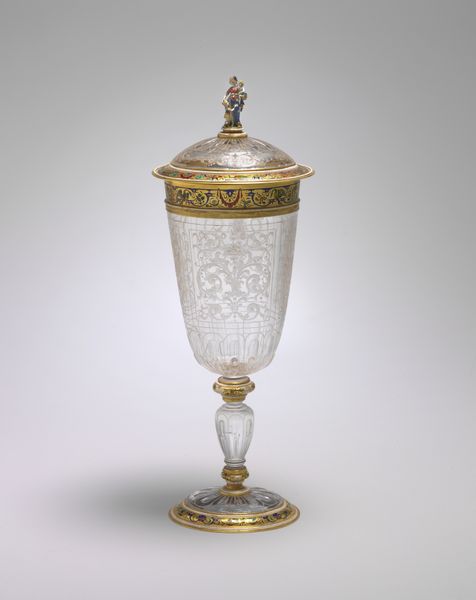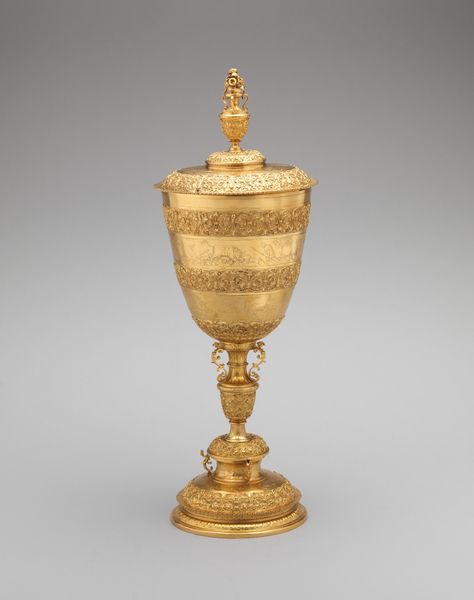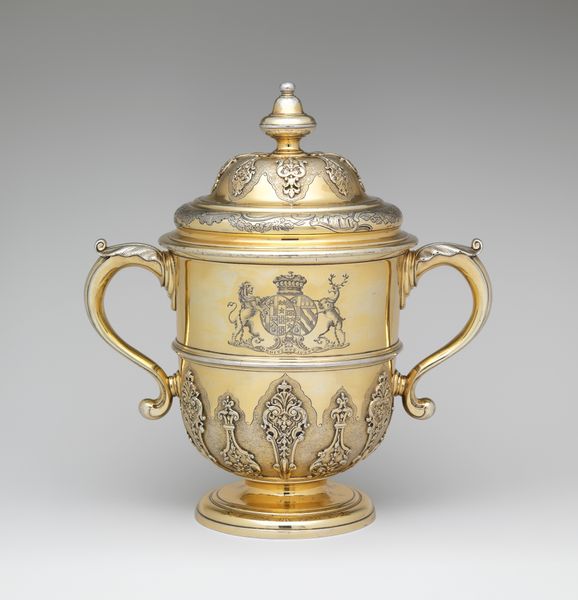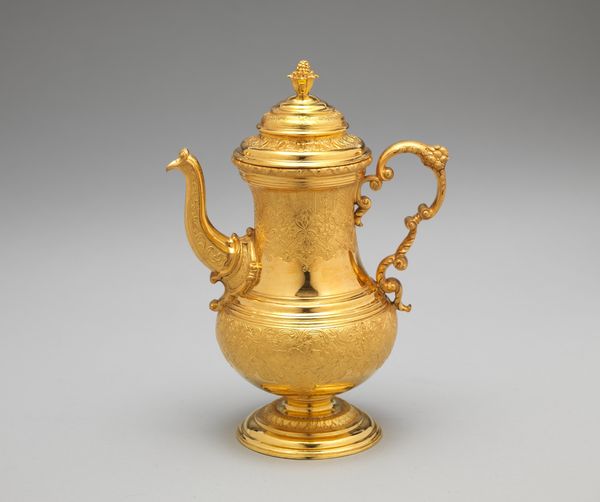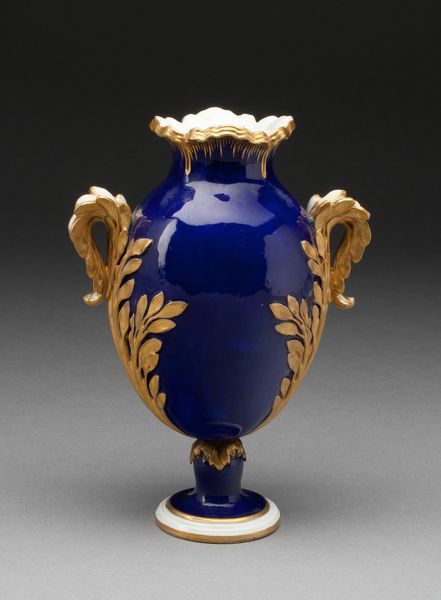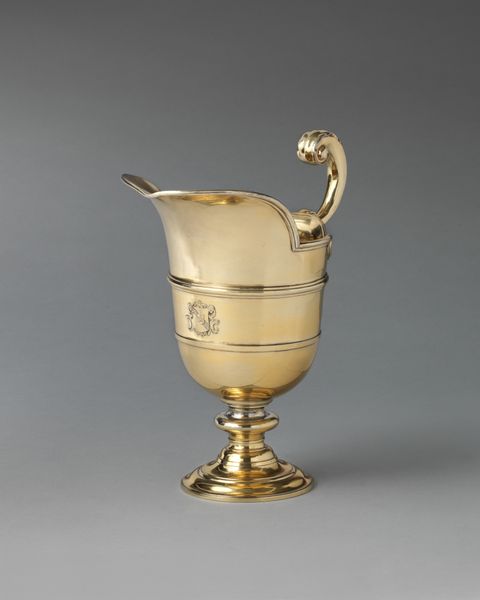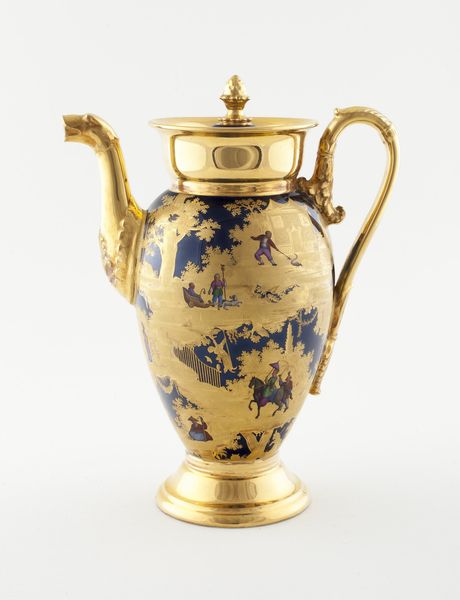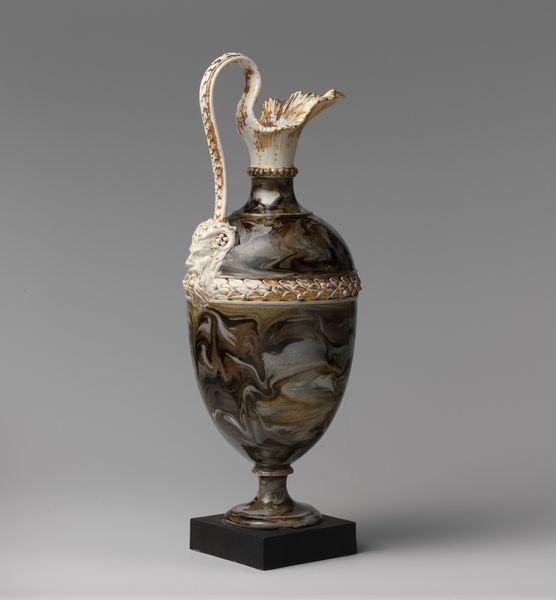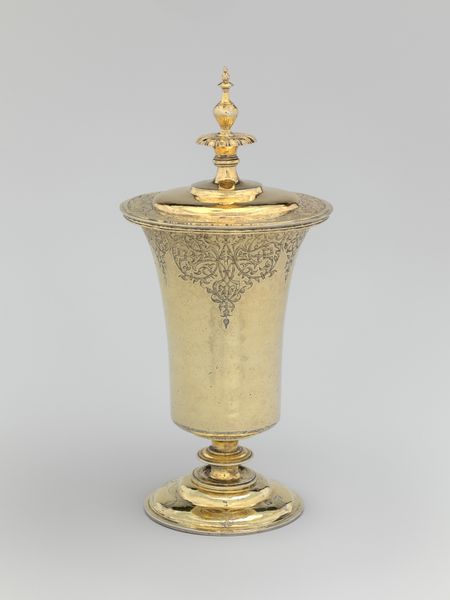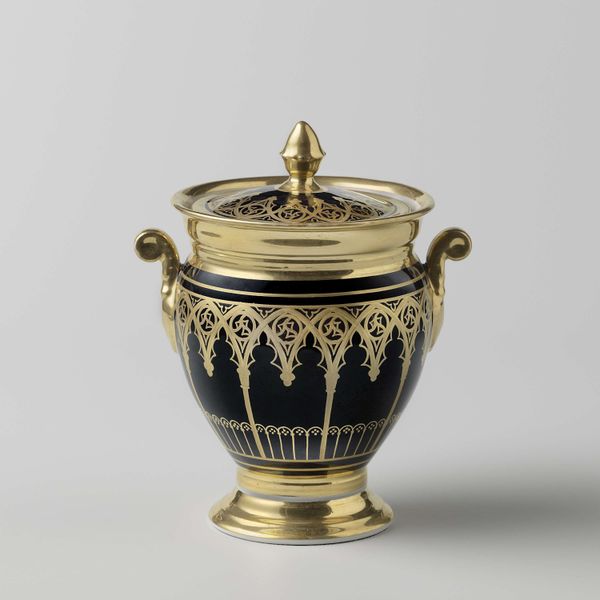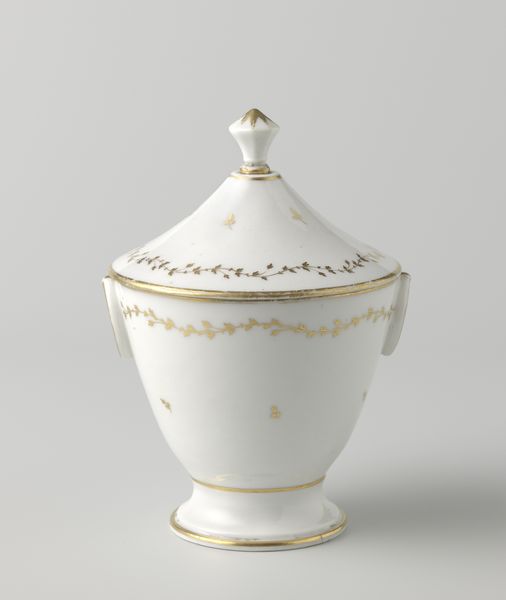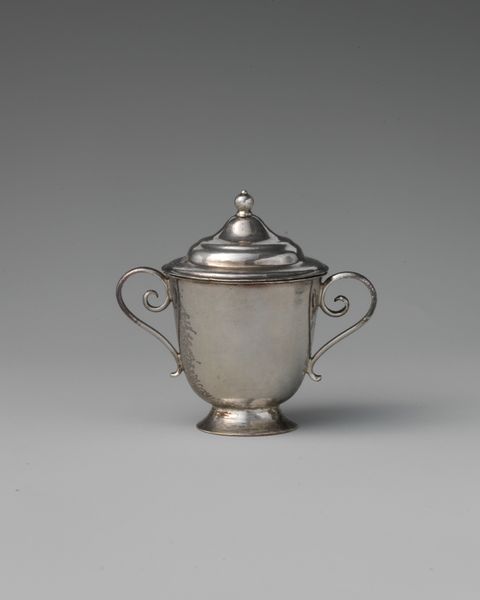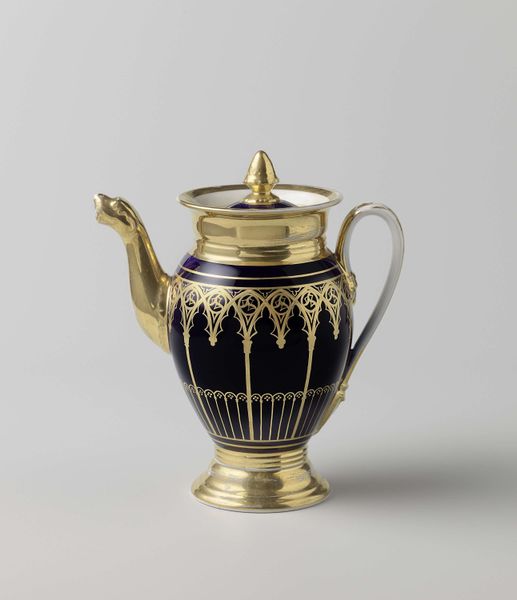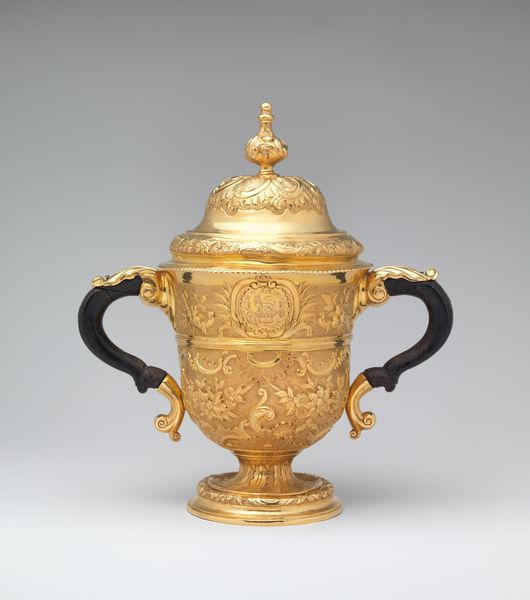
glass, sculpture
#
neoclacissism
#
glass
#
sculpture
#
decorative-art
Dimensions: Overall (confirmed): 20 1/2 × 12 7/8 × 9 1/8 in., 9lb. (52 × 32.7 × 23.2 cm, 4.0597kg)
Copyright: Public Domain
Curator: This stunning potpourri vase was crafted sometime between 1805 and 1815. Attributed to Karl Friedrich Schinkel, its home is now at the Metropolitan Museum of Art. It's a striking example of decorative art from the Neoclassical period. Editor: It looks impossibly delicate, almost ethereal! The way the milky glass contrasts with the sharp gold filigree gives it such a regal but light aesthetic. The labor involved must have been quite painstaking. Curator: Absolutely! Vases of this sort, particularly within the Neoclassical movement, are deeply rooted in symbolism. The shape references classical antiquity. We also see constant revisiting of imperial motifs that embody permanence and idealized beauty. Consider also the sensory function implied in "potpourri"—meant to stimulate scent memories as they disperse through domestic spaces. Editor: Which brings me back to the "means". What's striking is this isn’t just about elite tastes—it’s about the labor of highly skilled artisans working with challenging materials like glass and gold, each demanding specific techniques. Curator: Precisely. And these materials themselves have symbolic weight. Glass, with its ability to be both transparent and opaque, has been throughout time been tied to both fragility and perceived permanence. Gold carries its own connotations of power, of course, an intentional nod to aristocratic consumption. Editor: The production also touches upon broader systems: supply chains for the raw materials, and the dynamics of patronage within artisan workshops, both equally part of what a vase like this signifies. It almost belies the reality and effort involved in crafting an object intended for pleasure and fragrance! Curator: Yes! That dichotomy of opulence and fragility—between power and sensory subtlety—renders the object poignant beyond pure aesthetic value. It becomes an intriguing snapshot into its period. Editor: I completely agree. Considering the level of both industrial innovation and artistic skill applied here offers invaluable insights. Thank you for unveiling those details.
Comments
No comments
Be the first to comment and join the conversation on the ultimate creative platform.
